In late spring, elder trees (Sambucus nigra) and hedgerows start to blossom with the sweet scent of fragrant and delicate elderflowers. Easily found in the British countryside, woodlands, parks and gardens, the elder tree is also known as Black Elder, Ellhorn, Pipe tree, Bore tree, Eller and Holler.
The white, frothy elderflowers tend to bloom in late May, turning to elderberries in late August. Collect the flowers to make delicious elderflower cordial, or add them to cakes or biscuits or even try them deep-fried to make tasty elderflower fritters.
Our expert elderflower guide includes:
- What is elderflower
- When to pick it
- How to identify
- How to forage and parts used
- Health benefits of elderflower
- Elderflower recipes – including homemade elderflower cordial
What is elderflower?
Elderflower is the late spring and summer flower found on the elder tree (Sambucus Nigra). Come August it begins to produce rich, dark elderberries that can be harvested to make elderberry wine.
When is elderflower in season?
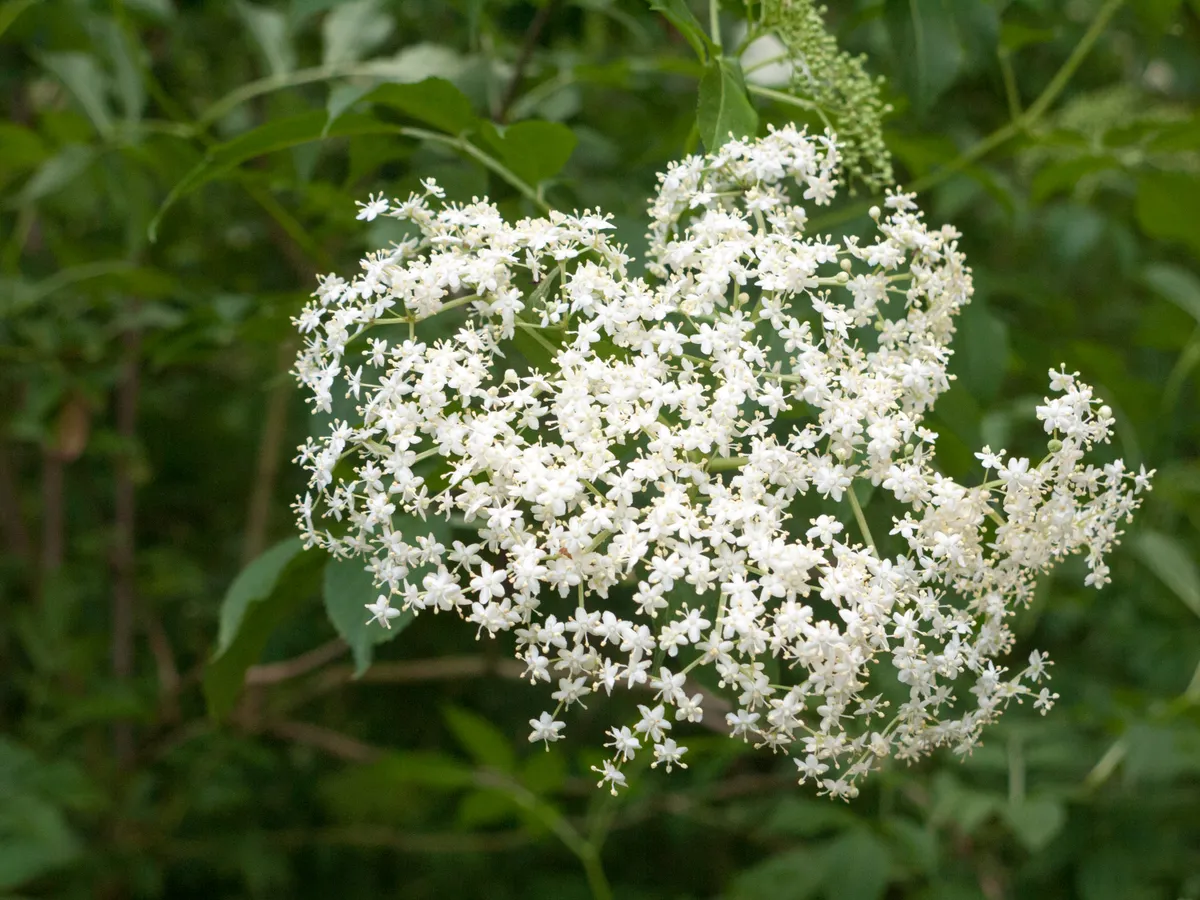
In the UK elderflower blooms begins to appear in late May and the season can last until August, although it tends to be past its best by then. June is typically the best time of year to collect elderflower as the flowers are at their freshest.
What does elderflower look like?
Elder trees are incredibly common across the UK. They are small hedgerow trees with corky bark that is deeply fissured as it gets older. The leaves comprise 5-7 oval leaflets with festery edges. The creamy flowers festoon the trees in June and the smell is particularly strong on warmer days.
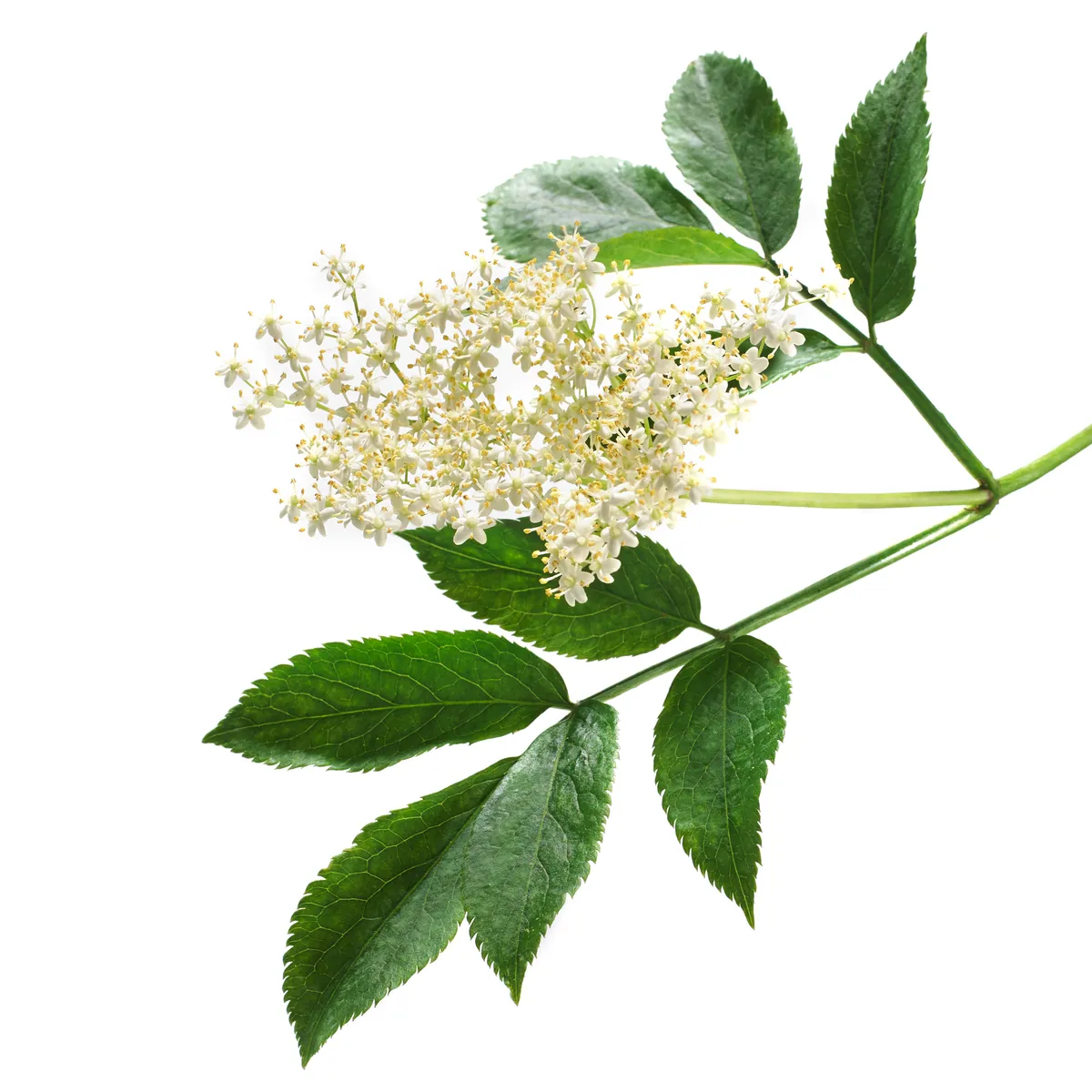
Elderflowers are the last of the great tree flower displays of the year. The umbrellas of dense, tiny white flowers send out an alluring sweet smell that can be captured in drinks such as cordial and champagne.
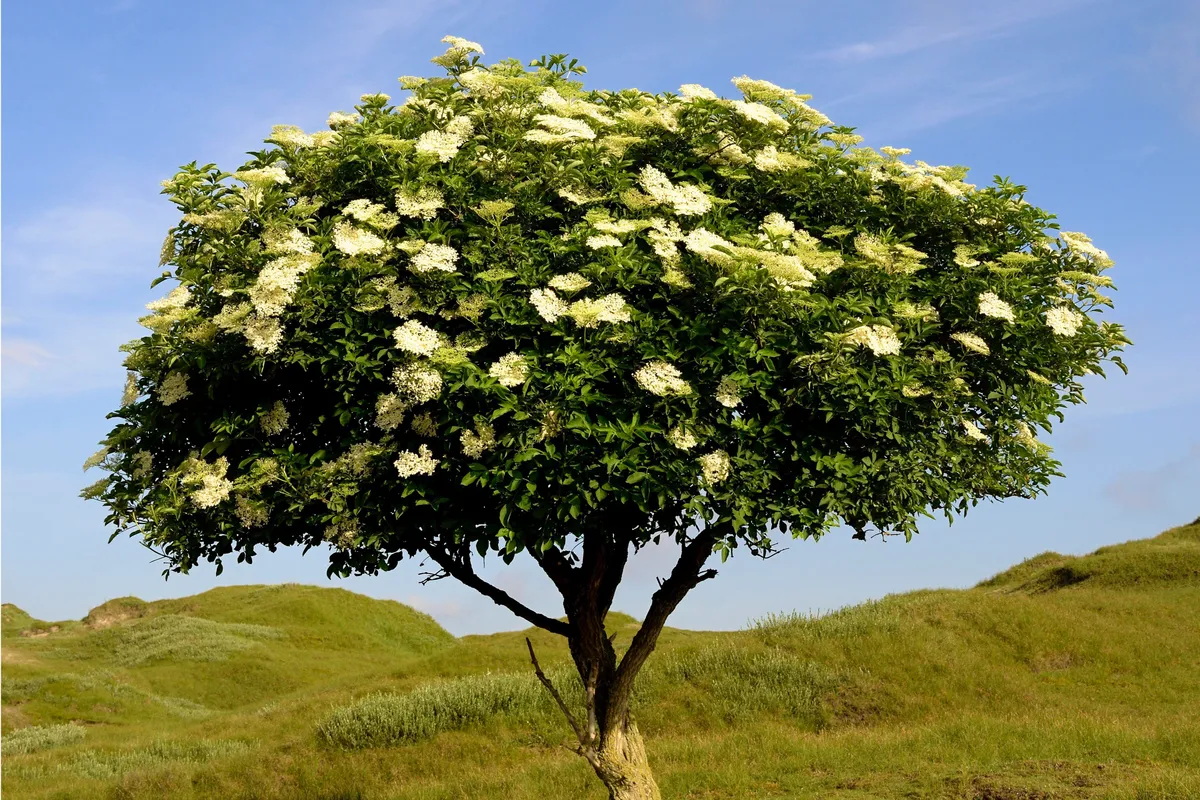
In June, the elder is at its finest, its leaves almost lost beneath the white of its flowers. The petals are small and clustered, but form an umbel that is broad and soporifically scented, like a dollop of perfume-infused, inflorescent ice-cream.
The crowns of elderflower have long been gathered. Some are dunked in batter and fried, while others find their way into cordials, wines or bottles of fermented fizz. This impacts little upon the tree’s regeneration, however, and by August those pollinated flowers that remain will have transformed into berries that ripen from green to deep claret.
How to forage for elderflower
Pick the flowers on a warm, dry day. Look for elderflower in hedgerows and verges between fields, in parks or green spaces. Avoid collecting it from busy roads as the flowers will absorb the traffic fumes, and pick the ones that are higher than doggy height (for obvious reasons).
Take a pair of sharp scissors and remove the flowerheads just below where all the small stems meet the main stem – you want as little of the green stem in your recipes as possible. Gather only a few flowerheads from each tree so as to allow as many as possible to develop into berries – a crucial late summer food source for birds, mammals and insects. A fabric bag, bucket or basket is the best way to carry your haul.
Once inside, give the flowers a little shake to remove any little black aphids or beetles. You can easily spot insects on the underside of the flowers, and it's easy to pick the stubborn ones off. Some people soak or rinse them in cold water, but the flavour will be less powerful as you rinse off the pollen that way.
- See our monthly foraging guide for advice on what to find each season and tips on how to forage responsibly
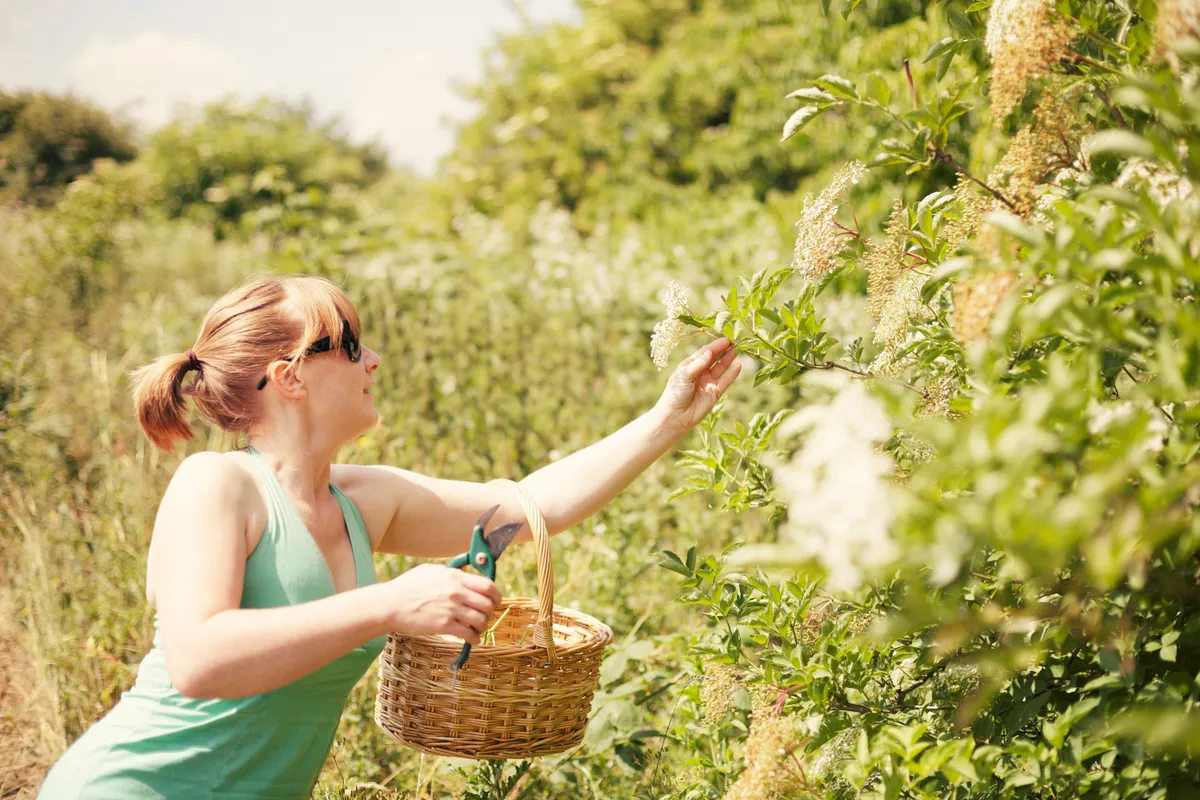
What are the health benefits of elderflowers?
For thousands of years elderflower has been believed to have medicinal and healing properties. You’ve probably tried elderflower in a tasty summer cordial but these flowers can be used for much more. The flowers have both anti-septic and anti-inflammatory effects, so country folk have been using them in home-remedies for centuries. A mix of elderflower and water can be used to alleviate symptoms of anything from the common cold to some forms of arthritis. Dried elderflowers can be combined with dried nettle and peppermint for a reliable hayfever tea that, when drunk daily, is thought to prevent inflammation as the season progresses.
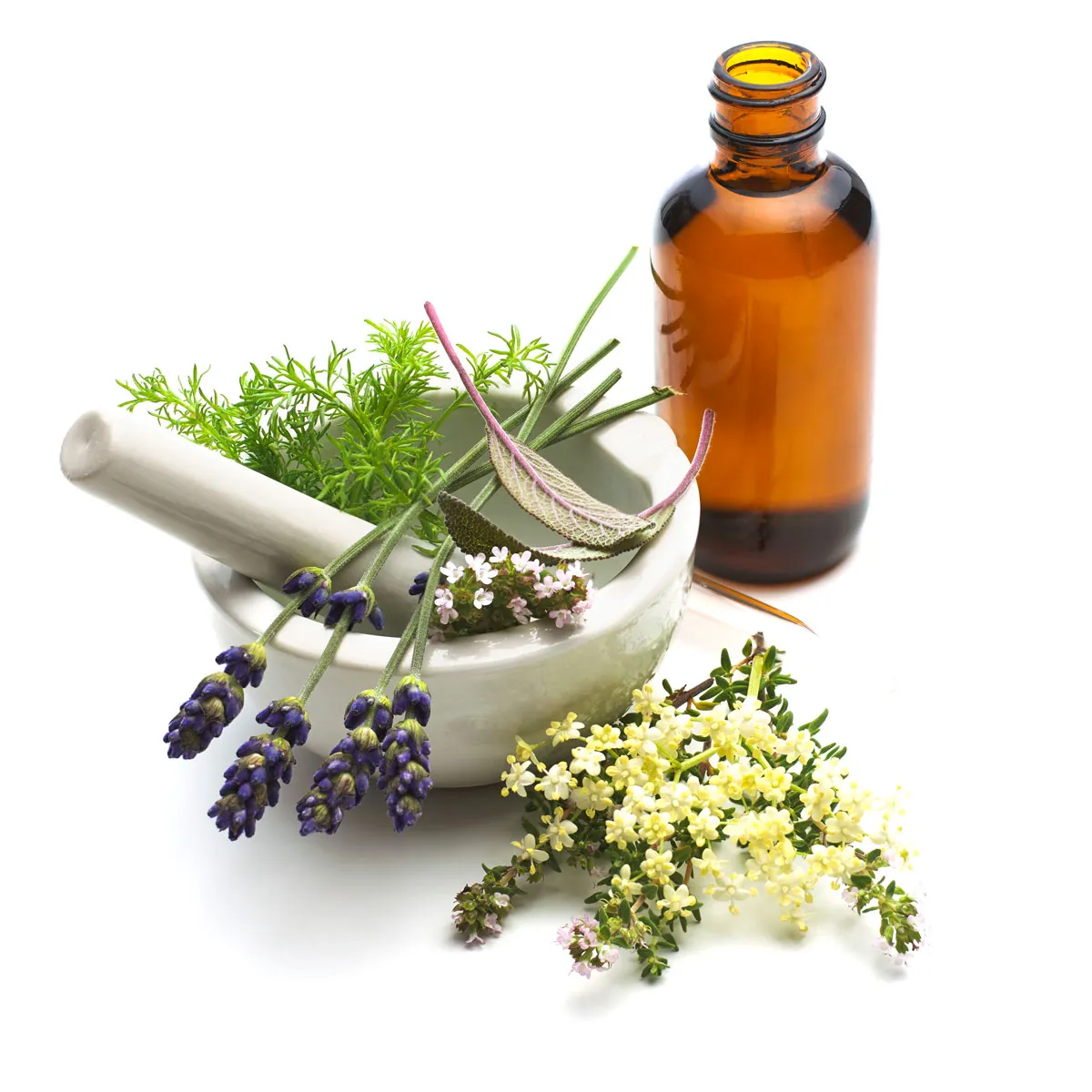
Best elderflower recipes
Nothing says summer like a fizzy glass of elderflower cordial (also delicious added to a gin and tonic or sparkling white wine). Here is a selection of delicious recipes to make using elderflowers.
How to make elderflower cordial
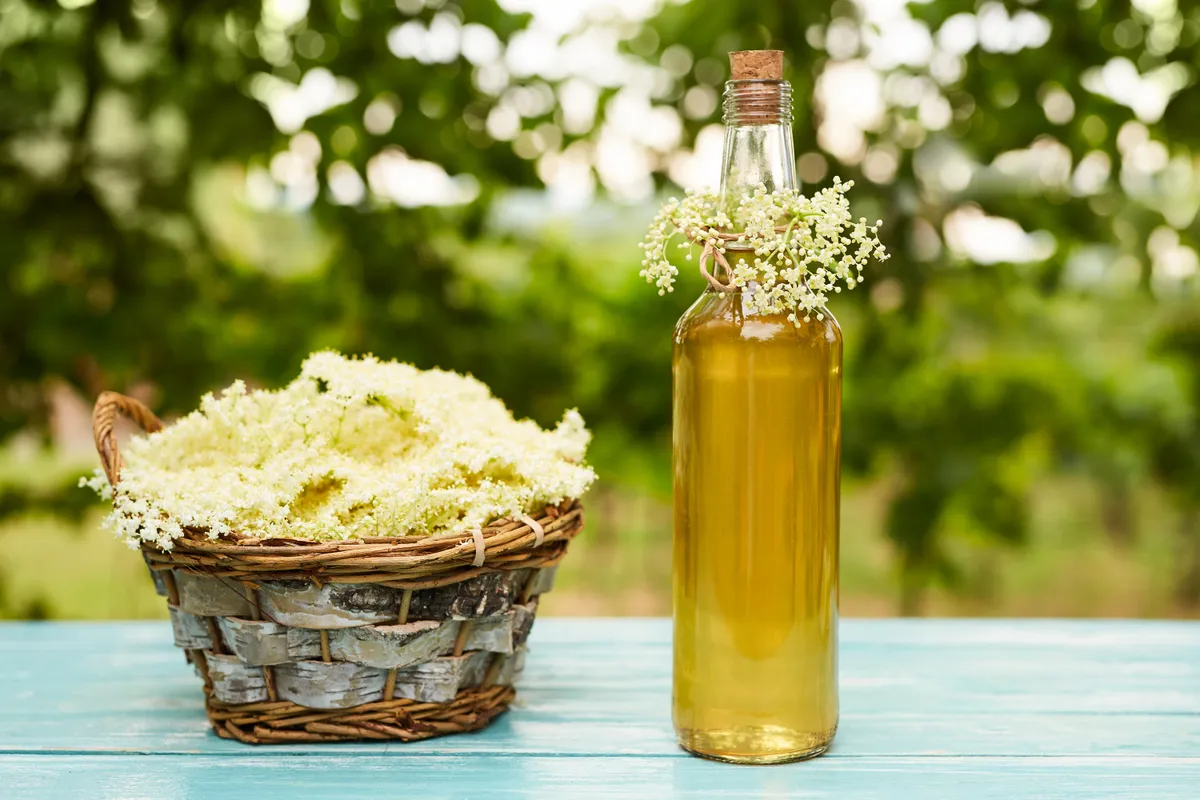
The floral taste of this traditional syrup is great with water, but also complements pastries, cakes, ice-cream and champagne or sparkling wine. Enjoy a fresh and fragrant drink with this easy and delicious elderflower cordial recipe - the perfect summer drink.
Elderflower fritters
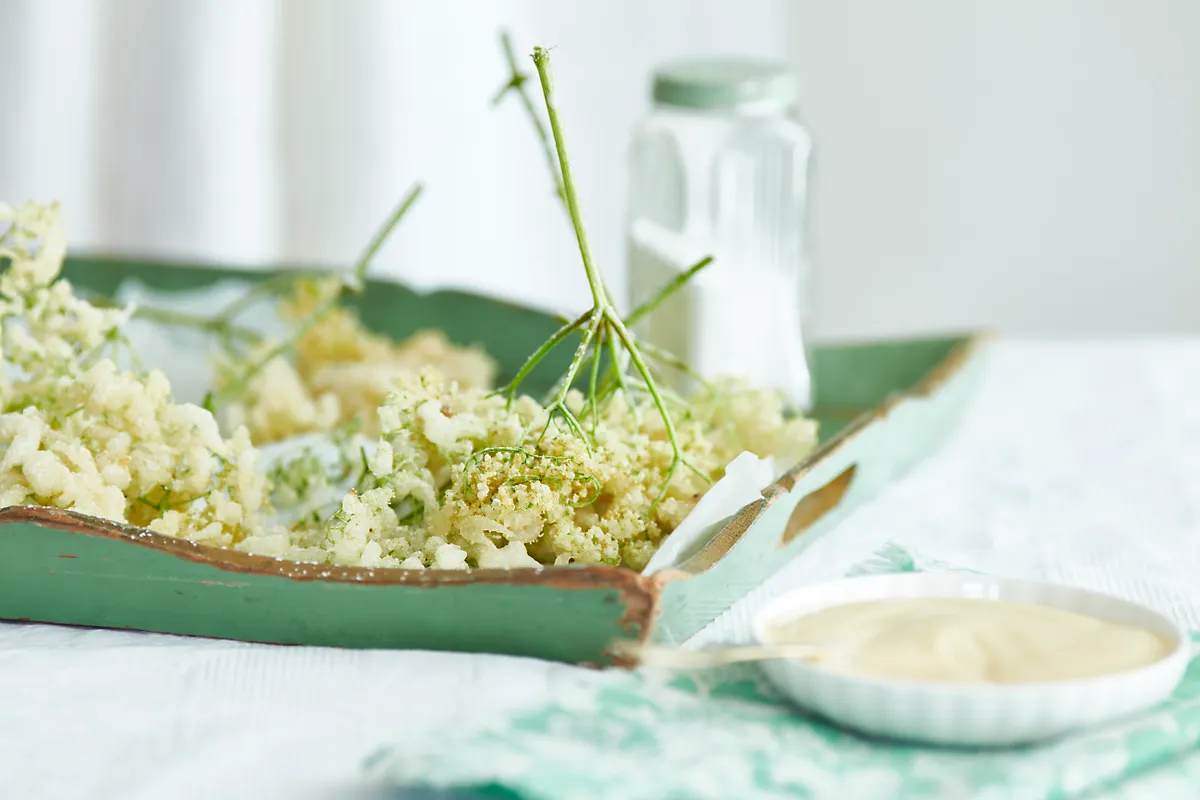
Make these light, golden, crunchy elderflower bites that retain that glorious scent of summer. Dust lightly with icing sugar or serve with ice cream for a sweet treat.
Elderflower and gooseberry jam

Make this tasty elderflower and gooseberry jam to enjoy summer flavours in the winter months.
Gooseberry, elderflower and lemon pancakes
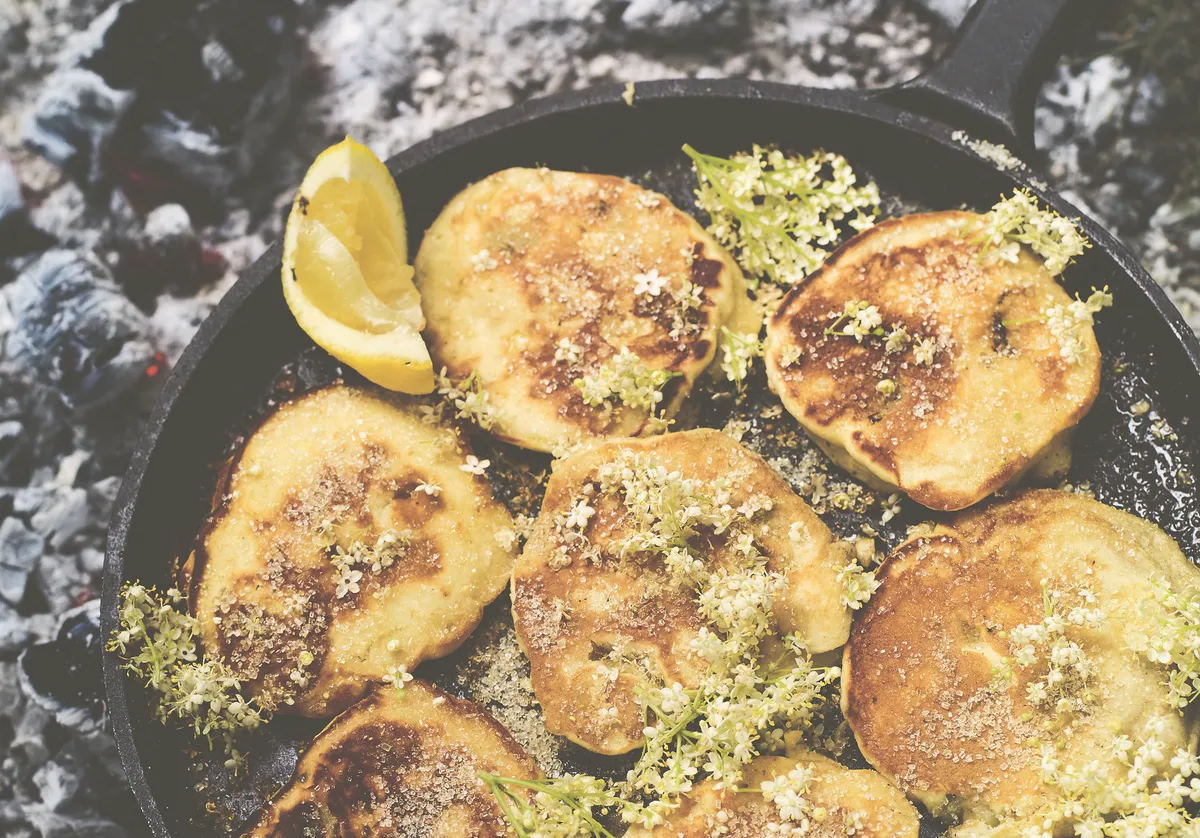
Elderflower and gooseberries are two ingredients we should make the most of while they’re here, and these early summer pancakes are a lovely way to bring them together, says River Cottage chef and food writer Gill Meller.

